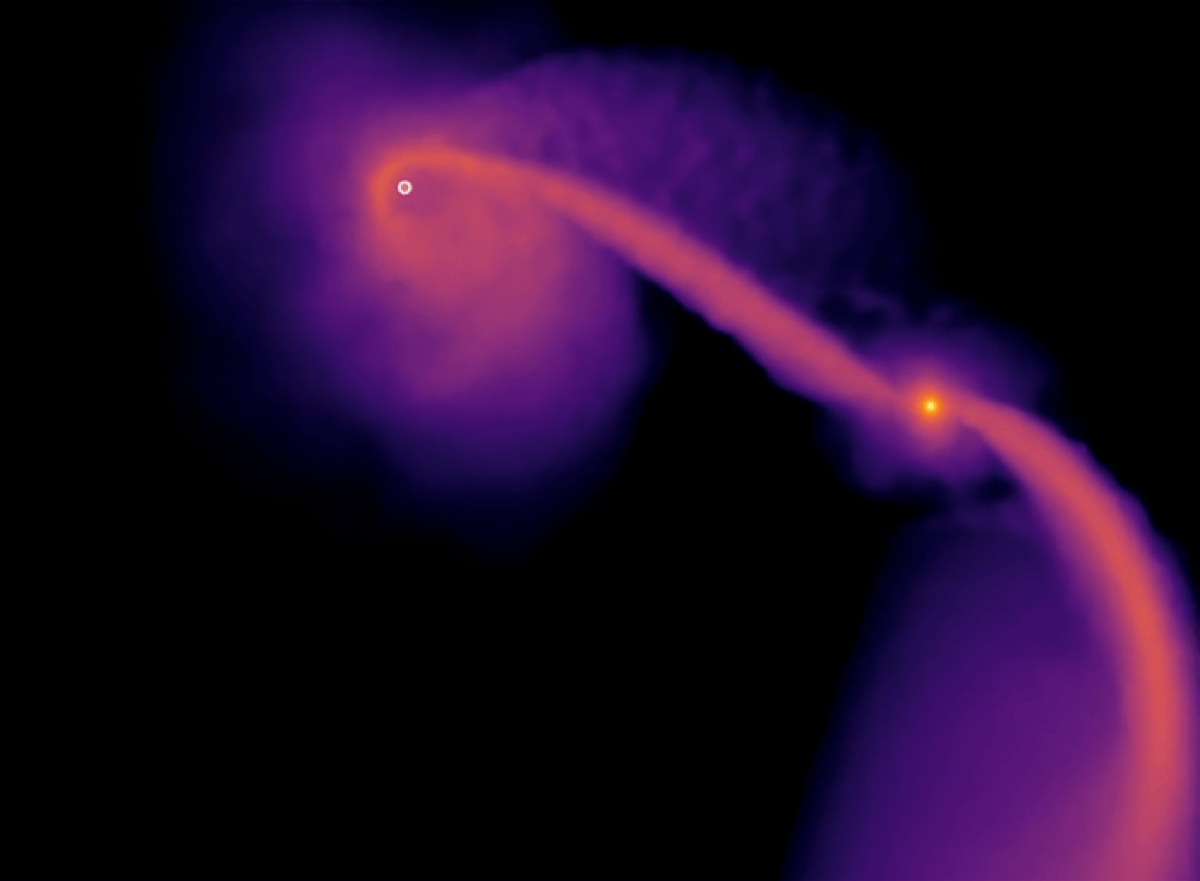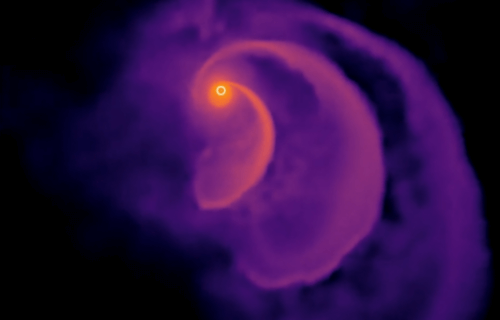EVANSTON, Ill. — Not every black hole is a galactic giant. For the smaller ones, a new study finds that they could use some lessons in “table manners” when it comes to eating up stars. Researchers from Northwestern University say medium-sized black holes consume wayward stars like a “messy toddler,” taking a few bites before hurling the remnants across the galaxy.
These drawn-out and violent feasts have been depicted in extraordinary detail through computer simulations, occurring in areas where gravity is so strong that even light cannot escape, rendering them invisible.
“We obviously cannot observe black holes directly because they don’t emit light,” says Northwestern’s Fulya Kıroğlu, who led the study. “Instead, we have to examine the interactions between black holes and their environments. We discovered that stars undergo multiple passages before being ejected. After each passage, they lose more mass, resulting in a flare of light as they’re torn apart. Each flare is brighter than the previous one, creating a signature that might help astronomers locate them.”
Identifying black holes is crucial, as they may be the source of a mysterious force known as dark energy. Some even suggest that they serve as tunnels between universes, forming a type of wormhole.
The new findings pertain to intermediate-mass black holes, which have a mass ranging from 100 to 10,000 solar masses. These are significantly more difficult to detect than their supermassive counterparts.

“Their presence is still debated. Astrophysicists have uncovered evidence of their existence, but that evidence can often be accounted for by other mechanisms. For instance, what seems to be an intermediate-mass black hole could actually be a cluster of stellar-mass black holes,” Kıroğlu explains in a media release.
Kıroğlu’s team developed new hydrodynamic models, including a large star, which was directed toward the black hole. The researchers calculated the gravitational force acting on the star’s particles during the approach.
“We can calculate specifically which particle is bound to the star and which particle is disrupted (or no longer bound to the star),” Kıroğlu reports.
The study demonstrated that stars could orbit an intermediate-mass black hole up to five times before ultimately being ejected. With each orbit around the black hole, the star loses more of its mass as it is torn apart. The black hole then propels the remnants, moving at scorching speeds, back into the galaxy. This repeating pattern creates a spectacular light display that could help astronomers identify and confirm the existence of intermediate-mass black holes.
“It’s amazing that the star isn’t fully ripped apart,” Kıroğlu says. “Some stars might get lucky and survive the event. The ejection speed is so high that these stars could be identified as hyper-velocity stars, which have been observed at the centers of galaxies.”
Kıroğlu’s next plan is to simulate giant and binary stars to study their interactions with black holes. Supermassive black holes are believed to power galaxies, with one located at the heart of the Milky Way.
The team presented their findings at a virtual meeting of the American Physical Society.
You might also be interested in:
South West News Service writer Mark Waghorn contributed to this report.

